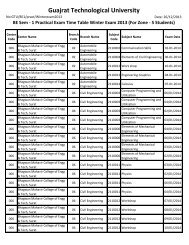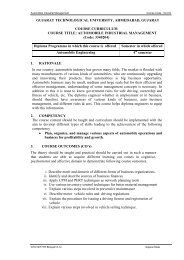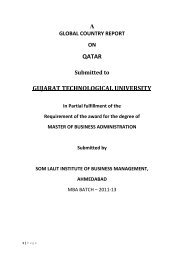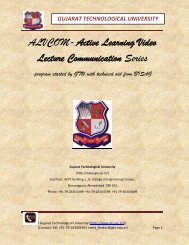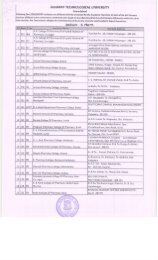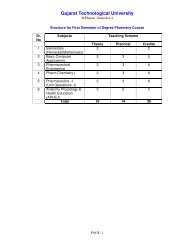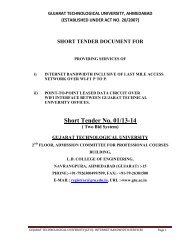751-Sabar Institute Of Management, Tajpur - Gujarat Technological ...
751-Sabar Institute Of Management, Tajpur - Gujarat Technological ...
751-Sabar Institute Of Management, Tajpur - Gujarat Technological ...
Create successful ePaper yourself
Turn your PDF publications into a flip-book with our unique Google optimized e-Paper software.
Overview<br />
Over 90% of world trade is carried by the international shipping industry. Without shipping<br />
the import and export of goods on the scale necessary for the modern world would not be<br />
possible.Seaborne trade continues to expand, bringing benefits for consumers across the<br />
world through low and decreasing freight costs. Thanks to the growing efficiency of shipping<br />
as a mode of transport and increased economic liberalisation, the prospects for the industry’s<br />
further growth continue to be strong.<br />
There are around 50,000 merchant ships trading internationally, transporting every kind of<br />
cargo. The world fleet is registered in over 150 nations, and manned by over a million<br />
seafarers of virtually every nationality.<br />
The worldwide population of seafarers serving on internationally trading merchant ships is<br />
estimated to be in the order of 466,000 officers and 721,000 ratings.<br />
The OECD countries (North America, Western Europe, Japan etc.) remain the most<br />
important source for officers, but growing numbers of officers are now recruited from the Far<br />
East and Eastern Europe.The majority of the shipping industry's ratings are recruited from<br />
developing countries, especially the Far East. The Philippines alone provides almost 20% of<br />
the global maritime workforce. China and India are also significant maritime labour supply<br />
nations, with many seafarers from these countries enjoying employment opportunities on<br />
foreign flag ships operated by international shipping companies. Other major labour supply<br />
countries include Greece, Japan, Norway, Russia and the United Kingdom.<br />
Trade Routes:<br />
Most of the world's shipping travels a relatively small number of major ocean routes: the<br />
North Atlantic, between Europe and eastern North America; the Mediterranean-Asian route<br />
via the Suez Canal; the Panama Canal route connecting Europe and the eastern American<br />
coasts with the western American coasts and Asia; the South African route linking Europe<br />
and America with Africa; the South American route from Europe and North America to<br />
South America; the North Pacific route linking western America with Japan and China; and<br />
the South Pacific route from western America to Australia, New Zealand, Indonesia, and<br />
southern Asia. The old Cape of Good Hope route pioneered by Vasco da Gama and shortened<br />
by the Suez Canal has returned to use for giant oil tankers plying between the Persian Gulf<br />
and Europe and America. Many shorter routes, including coastal routes, are heavily traveled.<br />
62



